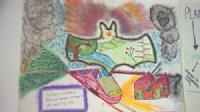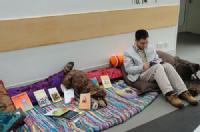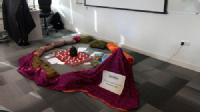Playful Spaces: Case Studies
Inspiring creativity (Dr David Beck, Global Sustainable Development)
The session I was running was about 90 minutes in length, one of three sessions which each group of 20ish students did as part of a field trip (the others being a guided walk to Kenilworth, and interacting with the public / mayor). The field trip was part of a module called GSD Mini-Project, in which the students are creating a project as a group to reflect on High Speed Rail 2 – the format of the project will vary by group, from a public engagement website to a creative video to a policy report to an essay.
My session in the Humanities Studio was intended to open up some creativity, and worked very well. I drew the curtains to divide the room in half, with one side ‘dark’ with the Dark Would fireplace and some bean bags in a circle, as well as a couple of prompting questions on the wall – I left the curtain closed and introduced each group to the space by simply saying “go sit by the fire”, which certainly let me know who the pyromaniacs are. There were lots of “ooos” and “aaahs” as the students walked in, they enjoyed the relaxed space and from my eavesdropping it worked in encouraging them to talk without as many boundaries or concerns as some of our students have in more formal teaching spaces.
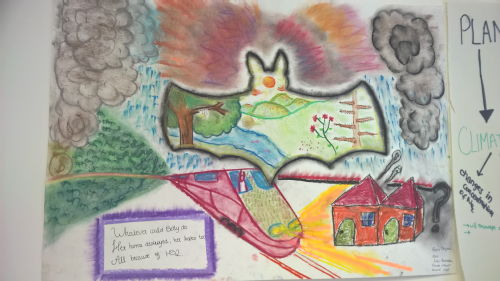
In the other half of the room, there were two sets of tables: a writing station, where students wrote poems/stories reflecting on HS2 (e.g. a story about poor Betty the Bat) either collaboratively or as individuals; and a drawing station, where students drew cool stuff (a couple attached, now on our common room wall). Students, working in groups of 6-8, rotated around the three sections while I said encouraging things about creativity and thinking about the morality behind the analytical things we’ve dealt with in other seminars.
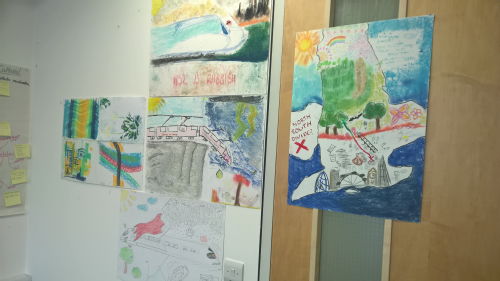
Most students embraced it and both enjoyed themselves and found it quite stimulating intellectually; a few, unsurprisingly given this is a small part of a core course, did not. But that’s fine.
Reading space (Philip Gaydon, Ethical Beings)
I start the module ‘Ethical Beings’ by providing the students with a large selection of children’s books, spanning early-years picture books, classroom resources, young-adult fiction, and much more. I then invite them to get themselves a drink and simply read as much or as little as they like. They have an hour.
What I hope will happen is that students will surrender themselves to the reading experience, relax into selecting books simply because they like the look of them, and feel that they can enjoy and simply be with the book without fear of judgement or having to give an intellectual explanation as to why.
Vital to this is how the space looks and feels to the students as they need to feel that they can create (mentally or physically) their own, safe reading environment even with others around. As such, the space needs to be populated by material that suggests comfort and flexibility. Additionally, the space needs have a sense of the childlike and playful as it is often our childhood reading experiences which most closely resemble those I hope students achieve during the session and the playful suggests a removal of strict boundaries.
This is where the materials from The Dark Would were invaluable. The mats, cushions, toys, and decorations suggested comfort, and their glorious plethora of textures and colours evoked the childlike and the playful. They were easy to pile up in a few places and in a way which suggested that they were there to be moved and used as the students wanted. This then give the room precisely the feeling I wanted. Students rifled through everything and swapped and shared until they were settled, comfortable and in their own space, whether that be on a chair, laid out on a cushion, or cuddled up with Wolfgang the cuddly toy. Indeed, Dr Laura Wood, award-winning children’s author and guest speaker for that week, commented that the space “felt really special and communal somehow”.
This opening session is run in The Humanities Studio. However, as part of an IATL module’s fair I used some of the material to set up a reading spot in The Ramphal Building. It was meant to be more of a display than for use, but, despite being right next to a point of major post-lecture traffic, students still used the space to settle down with a book in a similar way to the module session.
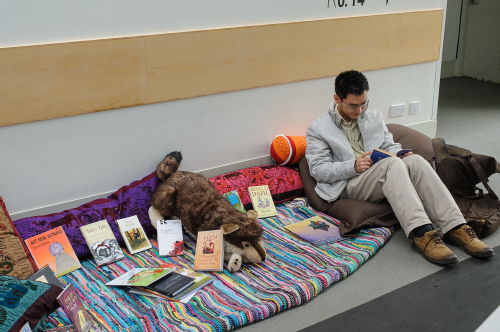
N.B. This session is modelled on Open-Space Learning’s ‘Coffee and Papers’ workshop.
Hogwarwick (Hannah Hickman, Library)
To mark University Mental Health Day and World Book Day, the Library held a series of workshops, events and activities that encouraged students to reflect on their wellbeing, find out about initiatives offered across the University to support wellbeing, and take some time away from their stressful studies… all using the theme of Harry Potter’s wizarding world! For one day, the Library transformed into ‘Hogwarwick’.
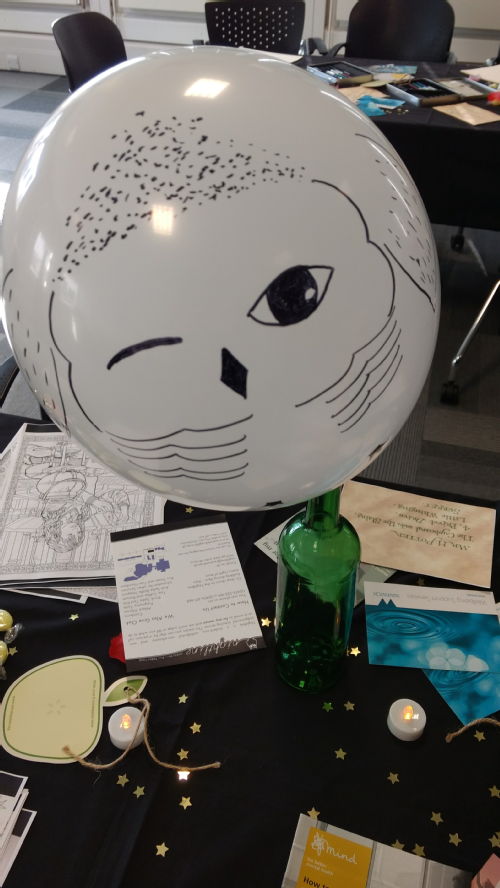
We felt that it was important to lead in with a soft-touch approach. Students often describe the Library as somewhere they ‘live’ but it’s also a place they associate with the stress of deadlines, revision and endless amounts of work. By focusing on feelings of wonder, play and childhood reminiscence students would be reminded on a time and a mindset when they were free from stress. Studies have shown that stress can negatively affect performance, so our aim with these events is to offer an opportunity for students to destress, to boost their wellbeing, and to find out about further support available.
Who better to turn to when you need to create a playful and creative atmosphere than IATL and the Dark Would?! We used the set up from the campfire to create a Divination circle with a starry night to create a feeling of fantasy.
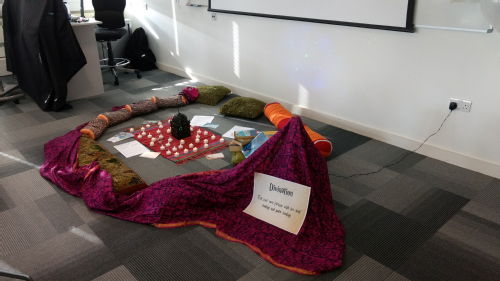
The props really helped to set the scene, like using glass bottles to recall Harry’s green eyes and Snape’s potion bottles, to the tea lights that mimicked Hogwart’s magical floating candles. We even borrowed a cape which the students loved wearing. The space we had to deal with is grey and business-like, and the Dark Would props were critical to supplement the event and create an immersive environment.
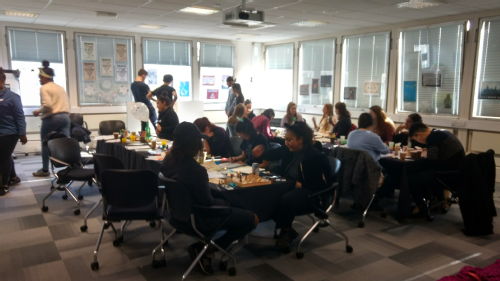
The session was well-attended, pulling in over 160 students over four hours, and generated positive student feedback - it was definitely a magical afternoon.

